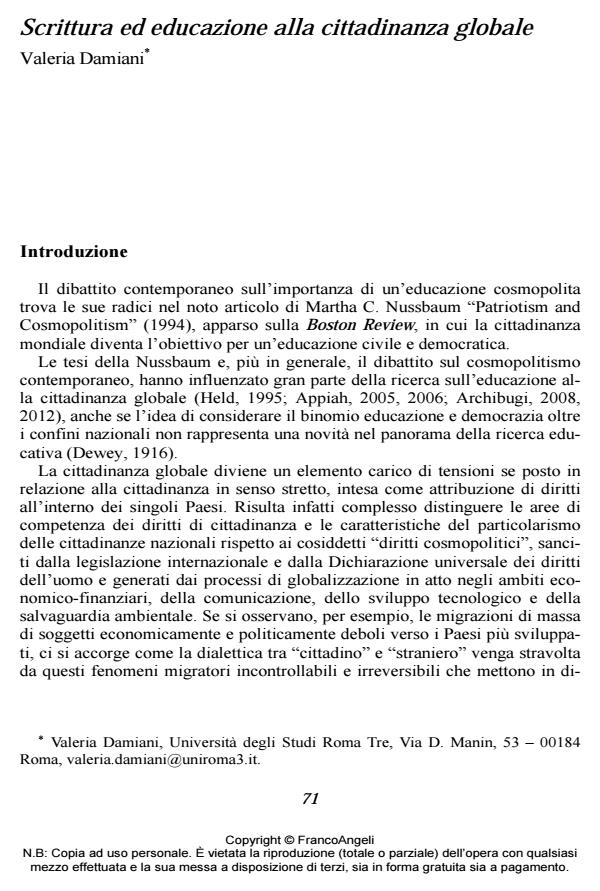Scrittura ed educazione alla cittadinanza globale
Journal title CADMO
Author/s Valeria Damiani
Publishing Year 2016 Issue 2016/1
Language Italian Pages 24 P. 71-94 File size 210 KB
DOI 10.3280/CAD2016-001009
DOI is like a bar code for intellectual property: to have more infomation
click here
Below, you can see the article first page
If you want to buy this article in PDF format, you can do it, following the instructions to buy download credits

FrancoAngeli is member of Publishers International Linking Association, Inc (PILA), a not-for-profit association which run the CrossRef service enabling links to and from online scholarly content.
Global Citizenship Education (Gce) aims at developing students’ awareness on global issues and engagement in actions for change at local and global level. Its introduction into classroom practice raises some questions on the knowledge and skills necessary to reach Gce goals in teaching and learning contexts. This article aims at analyzing students’ understanding of global issues, tackled during a learning unit devoted to Gce, through the analysis of three different types of written compositions. After highlighting some critical elements in students’ writing, the study stresses the difficulty in finding evidences of their learning through written tasks. Finally, the article shows the implications in applying the general theoretical models for Gce in a teaching and learning perspective, stressing the need to enhance students’ knowledge and skills for understanding of and writing about complex issues related to contemporary world.
Keywords: Global citizenship education, writing, writing assessment, learning unit.
- Scrittura ed educazione alla cittadinanza globale Valeria Damiani, in CADMO 1/2016 pp.71
DOI: 10.3280/CAD2016-001009 - L'indagine sull'educazione civica e alla cittadinanza IEA-ICCS 2016: un approfondimento sugli atteggiamenti degli studenti italiani Valeria Damiani, in CADMO 2/2018 pp.33
DOI: 10.3280/CAD2017-002004
Valeria Damiani, Scrittura ed educazione alla cittadinanza globale in "CADMO" 1/2016, pp 71-94, DOI: 10.3280/CAD2016-001009